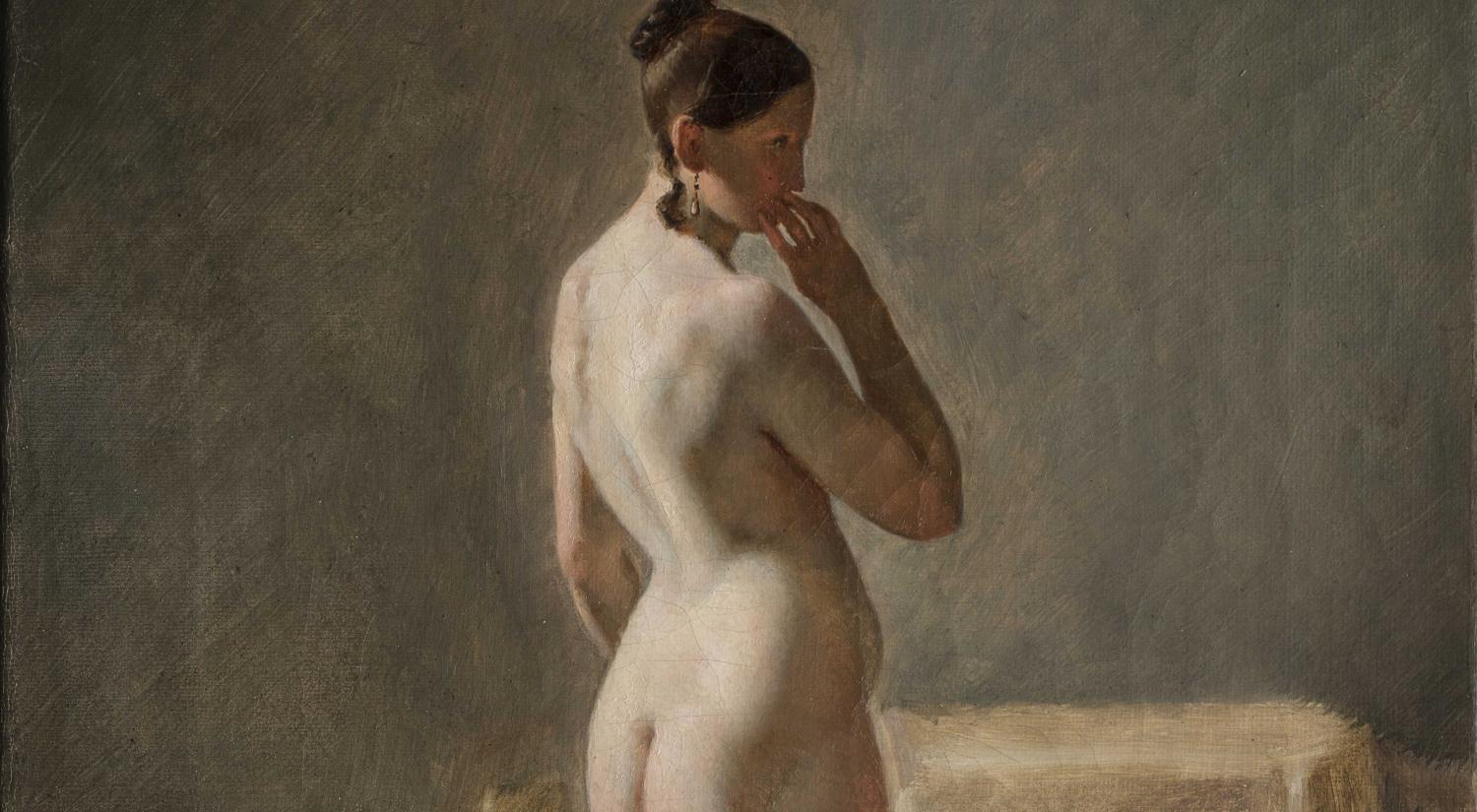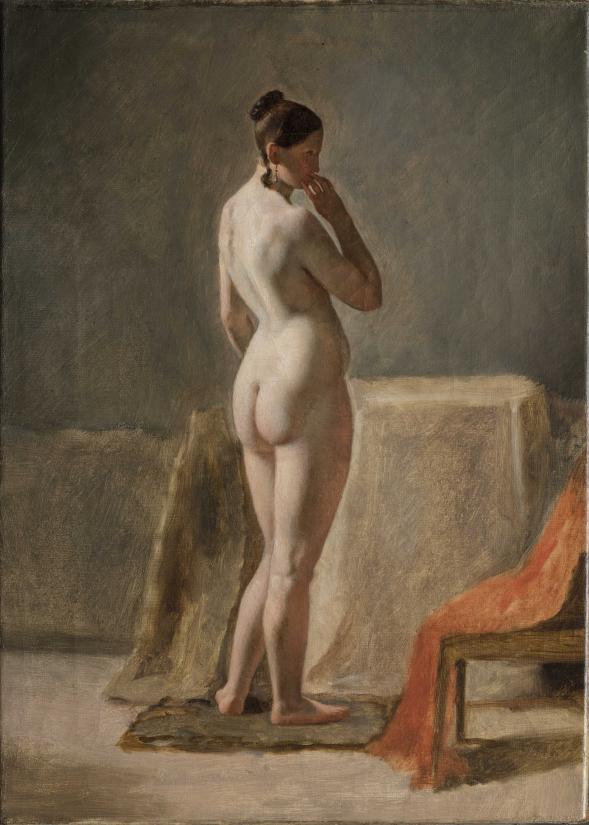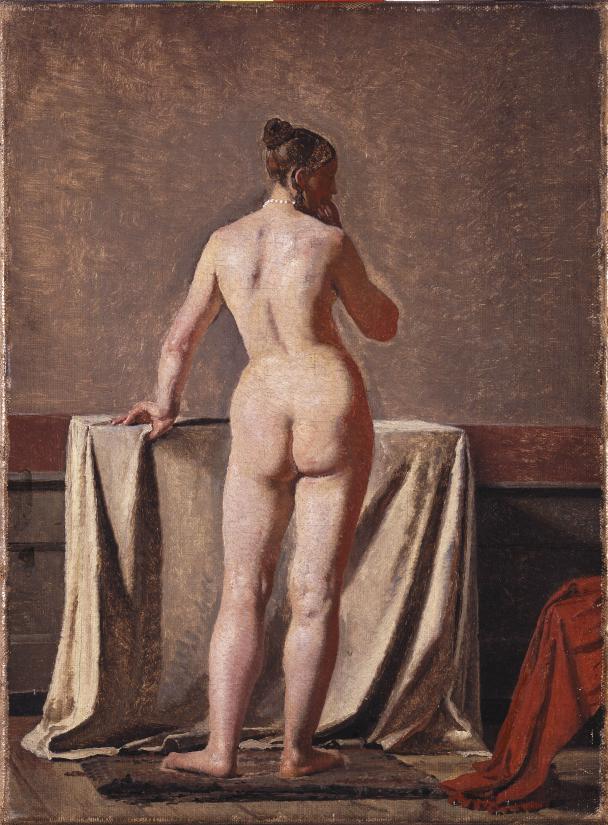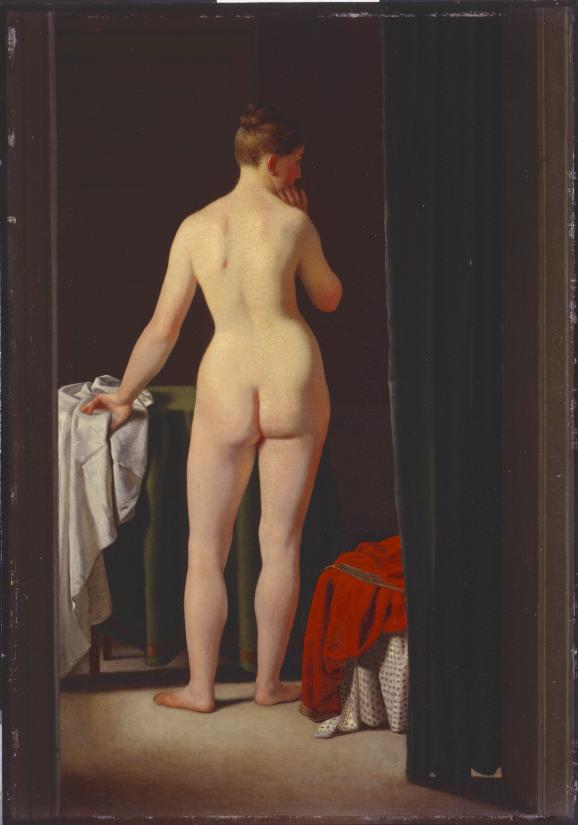The life study is part of a small group of studies from a known session at the Royal Danish Academy of Fine Arts in Copenhagen in June 1833 supervised by Professor C. W. Eckersberg. From Eckersberg’s journal we know that at this session he and his five students, Constantin Hansen, Christen Købke, Wilhelm Marstrand, Martinus Rørbye and Adam Müller – who all went on have illustrious careers of their own – painted a female nude.
Today we know of five of the six studies from this session at the academy. Until now, the collection at the Glyptotek has included Eckersberg’s own study and the ones by Hansen, Købke and Marstrand. These four works were also donated by the New Carlsberg Foundation, and with this recent donation, the Glyptotek collection now includes all five known studies, although it has not been ascertained whether the latest addition was done by Rørbye or Müller.
Side by side
Visitors to the museum can now view the five studies side by side in the museum’s exhibition from the Danish Golden Age.
‘It was important for the New Carlsberg Foundation to ensure that the now famous model studies can be shown together in the same museum, as that gives all of us a unique opportunity to take a close look at one of the main chapters of Danish art history. It’s almost like seeing the heavyweights of the Golden Age in a live session, working side by side on the same motif. This makes their differences and similarities visible in a new, work-specific context and confirms that Danish Golden Age art was far from uniform and predictable,’ says Karsten Ohrt, chairman of the New Carlsberg Foundation.
‘At the museum we are thrilled because this donation allows us to add the last painting in this beautiful little series to our collection, although of course we’d love to be able to determine whether it is from Rørbye’s or Müller’s hand. To the observer, this unique little collection of studies offers a unique insight into the training at the Academy at the time and, of course, into the male Golden Age painters’ perception of the female body,’ says Museum Director Christine Buhl Andersen.
The first female life studies
In Copenhagen, life studies long featured male models only, but during Professor Eckersberg’s tenure, royal permission was obtained for the inclusion of female models. The life studies from June 1833 thus reflect a turning point in the use of models at the academy in Copenhagen.
The works from the session are considered studies only, and with the exception of Eckersberg’s picture, they were not finished. However, Eckersberg continued working on the motif and turned it into a finished painting. By adding a curtain he transformed the day-time scene, bringing an evening mood to his picture that makes it stand out from the others.
Part of a greater whole
The New Carlsberg Foundation also funded the earlier donations of the four other pictures in the series. Over the years, the foundation has donated several other fine paintings that may be viewed as extensions of the life studies and similarly contribute to the story about the practice at the Academy during the mid 19th century. Among them are Hansen’s Hvilende Model (Resting Model) (1839) and Eckersberg’s Nøgen kvinde, der drager tøfler på (Naked Woman Putting on Her Slippers) (1843) and Modellen Sophie (A Model Named Sophie) (1833).
The most recent acquisition was previously privately owned, but was exhibited at the Glyptotek in 1981 as part of the exhibition ‘Købke og Kastellet’ (Købke and the Citadel), where it was shown alongside the four other life studies.








